
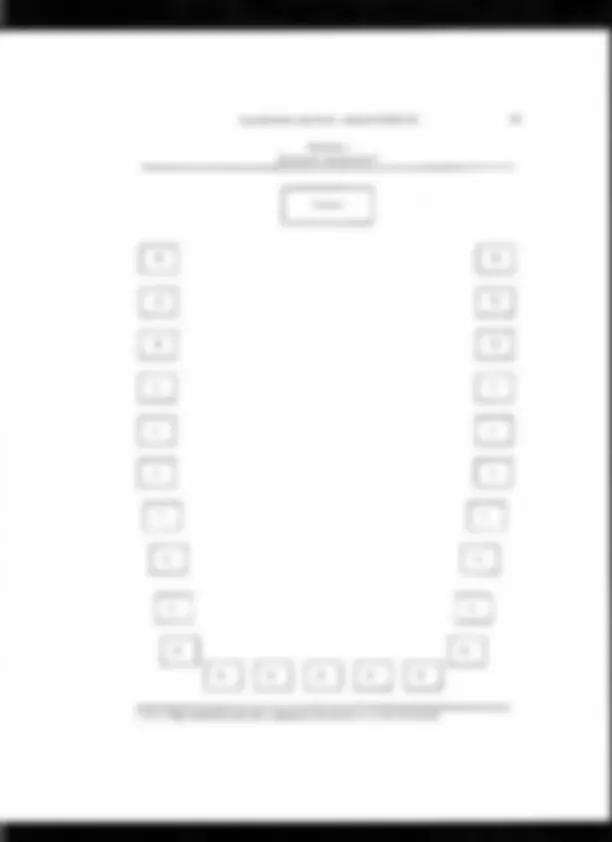
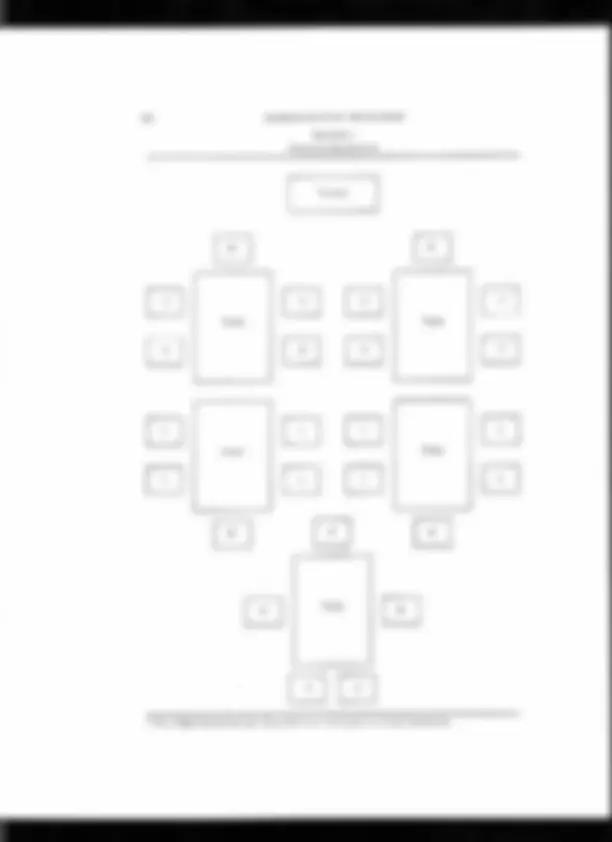
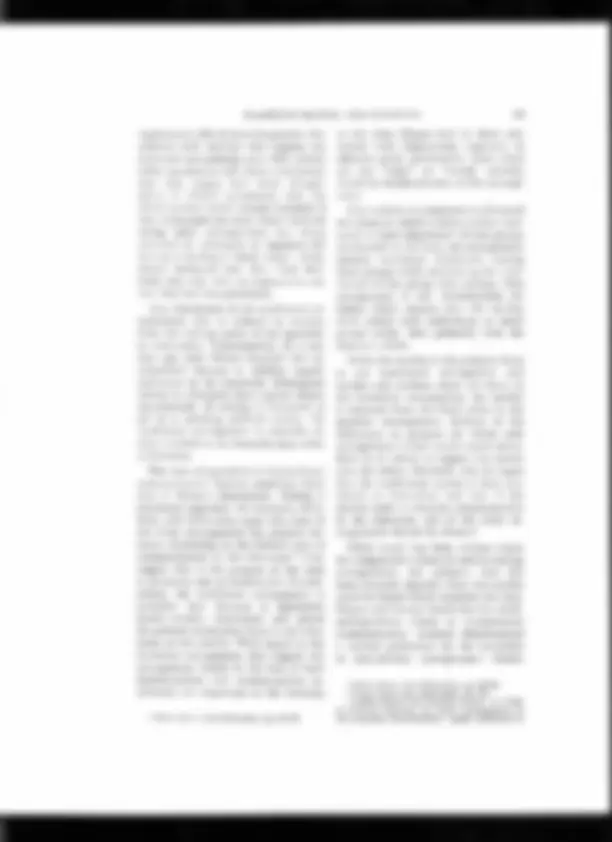
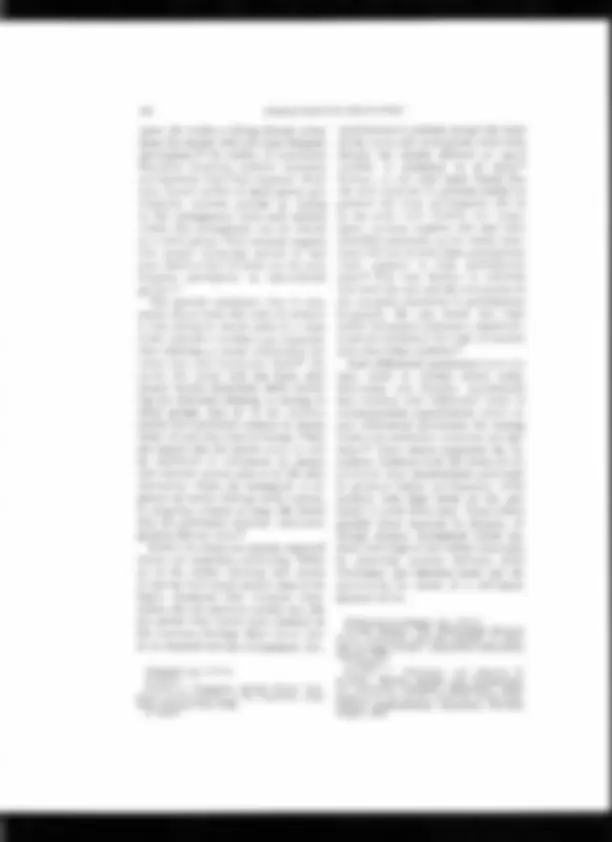
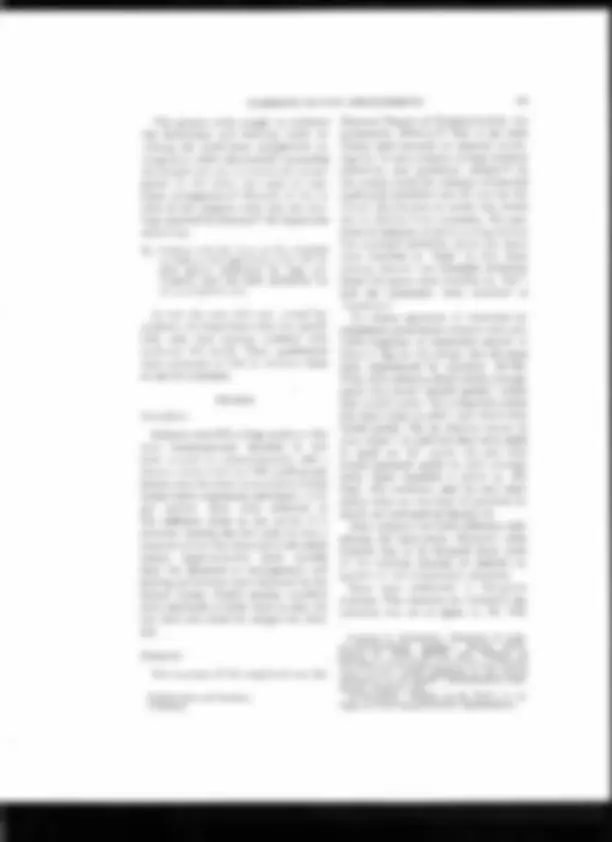
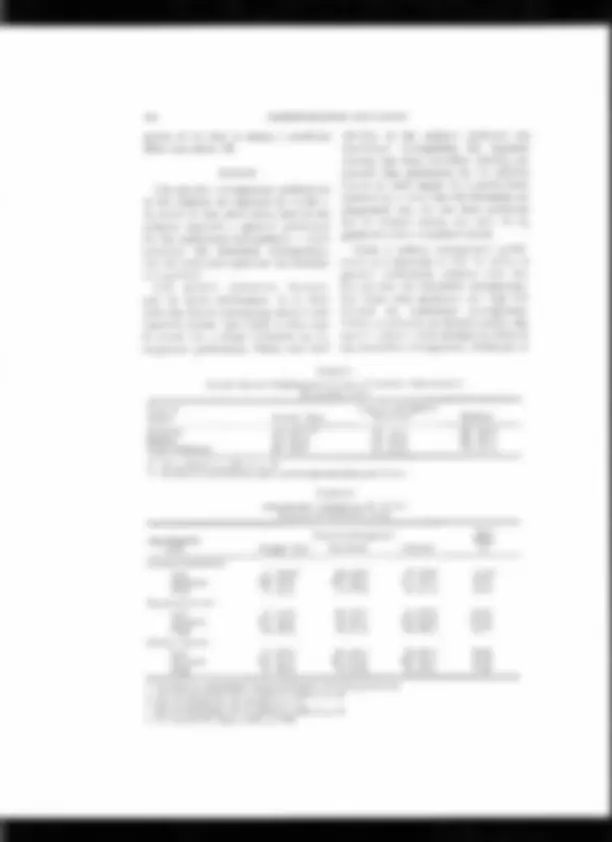
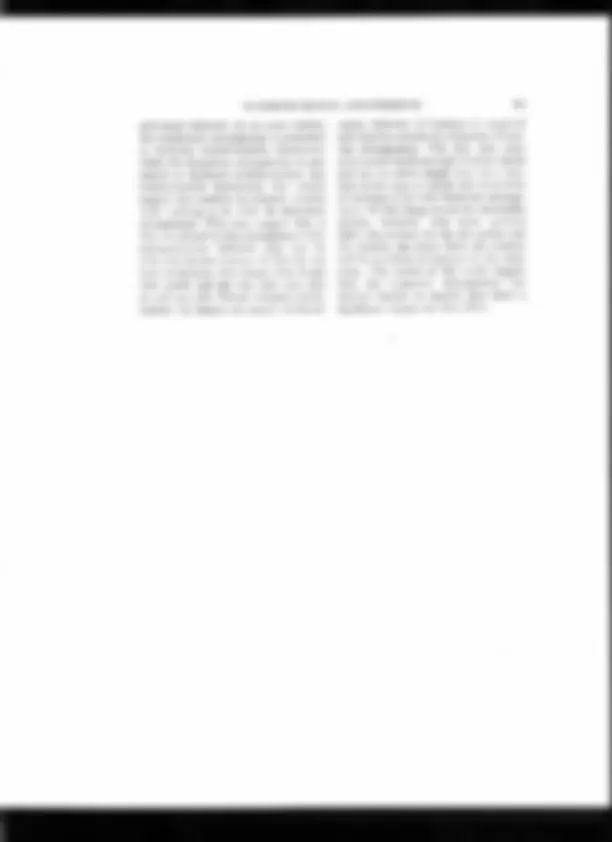


Study with the several resources on Docsity

Earn points by helping other students or get them with a premium plan


Prepare for your exams
Study with the several resources on Docsity

Earn points to download
Earn points by helping other students or get them with a premium plan
Community
Ask the community for help and clear up your study doubts
Discover the best universities in your country according to Docsity users
Free resources
Download our free guides on studying techniques, anxiety management strategies, and thesis advice from Docsity tutors
The impact of classroom seating arrangements on student communication preferences, as discussed in a research article by McCorskey and McVetta. The authors investigate how seating arrangements, such as traditional, modular, and horseshoe, influence student interaction and communication in the classroom.
Typology: Study Guides, Projects, Research
1 / 13

This page cannot be seen from the preview
Don't miss anything!








CLASSROOM SEATING ARRANGEMENTS:
INSTRUCTIONAL COMMUNICATION
THEORY VERSUS STUDENT PREFERENCES
Effective communication in the class- room is essential to the success of both the student and the teacher.! The kind of communication as well as the amount of communication that occurs in the classroom has long been thought to be
rangement of stUdents. While there prob- ably is an infinite number of ways of arranging a classroom, three are most common: traditional, horseshoe, and modular. The traditional. arrangement (see Figure I) for classrooms typically consists of about five or six perfectly straight rows, each containing five to seven chairs equidistant from each other-or as Rosenfeld and Civikly say, "something like tombstones in a military ceme- tery.":! Historically, Sommer explains, the straight-row arrangement evolved to
Dr. McCroskey is Professor and Chairperson of the Department of SPeech Communication at West Virginia University. Mr. McVetta is a doctoral candidate specializing in Communica- tion in Instruction at the same institution. 1 For recent books concerned with the role of communication in the classroom, see Gustav W. Friedrich, Kathleen Galvin, and Cassandra Book, Growing Together:Classroom Communi- cation (Columbus, Ohio: Charles E. Merrill. 1976), and H. Thomas Hurt, Michael D. Scott. 2 Lawrence B. Rosenfeld and Jean M. Civikly, and James C. McCroskey, Communication in the With Words Unspoken: The Nonverbal Experi- Classroom (Reading, Mass.: Addison-Wesley Pub. ence (New York: Holt, Rinehart and 'Winston, Co., 1978). 1976), p. 161. COMMUNICATION EDUCATION, Volume 27, Marro 1978
JllII COMMUNICATION EDUCATION
TRADITIONAL ARRANGEME1'o'T
FIGURE 1
Teacher
M H
M M
L M
L ~
L L
H H ~
~
M M
H M^ L
~
L L
M L ~I
. H = High Interaction seat, M = Moderate Interaction, L = Low Interaction
make the best use of the only adequate lighting then available-natural light from side windows.3 In spite of develop- ments in lighting which make the straight-row arrangement unnecessary, this traditional arrangement persists, in fact dominates. A recent survey of class- rooms on a university campus found over 90 percent of the classrooms to have this arrangement. The horseshoe or semi-circular ar- rangement (see Figure 2) is frequently employed in smaller classes, such as semi- nars. Some rooms are not physically con- ducive to this arrangement for larger
3 Robert Sommer, Personal Space (Englewood Cliffs. N.J.: Prentice-Hall. 1969).
classes because of the "dead space" in the middle. Consequently a "double horseshoe", two semi-circular rows with one inside the other, is also frequently observed. The modular arrangement (see Figure 3) is found mostly in specialized classrooms (e.g. home economics. science laboratories) and in classrooms :It the lower elementary school levels.
Evaluation of Variotls Arrangements As we noted above, the traditional straight-row arrangement is predominate in most educational settings, particularly in college and upper elementary through high school settings. The cause of this dominance is elusive, but tradition is the
I L II ~ I L I II L I Table Table
~ I I L I I L II II L I
I H I I Table I I H l
~IMI
. H = High Interaction seat, M = ~loderate Interaction.L = Low Interaction - 102 COMMUNICATION EDUCATION
, FIGURE 3
. MODULAR ARRANCn1E:-IT
I T ,.me, I
I H j I^ H^ I
I M II I^ M^ I^ I^ M^ I^ I^ M^ I Table Table
.1 M II I^ M^ I^ I^ M^ I^ I^ M^ I
CL\SSROOM SEATING ARRANGE~rENTS
explanation offered most frequently. Dis- cussions with teachers who employ the strait-row arrangement (over 300) yielded other reactions as well. Many commented that they simply had never thought about it. Others commented that the school janitor would become incensed if they rearranged the seats. Some reported trying other arrangements but being chastised by colleagues or superiors for having or leaving a "messy room". Many simply indicated that they liked their room that way, with no explanation for why they had that preference. This dominance of the traditional ar- rangement also is difficult to ey?lain from the vantage point of the specialist in instruction. Three-quarters of a cen- tury ago John Dewey attacked this ar- rangement because it inhibits experi- mentation in the classroom. Subsequent writers in education have agreed almost unanimously. If seating is discussed at all in a teaching methods course, the traditional arrangement is virtually al- ways attacked as less desirable than other alternatives. The view of speci~lists in instructional communication departs somewhat from that of Dewey's descendants. Taking a functional approach, for example, Hurt, Scott, and McCroskey argue that each of the three arrangements has positive ele- ments depending on the desired type of communication in the classroom:~ They suggest that if the purpose of the class is primarily one of information dissemi- nation, the traditional arrangement is probably best because it minimizes student-student interaction and places the primary interaction focus in the class- room on the teacher. With regard to the horseshoe arrangement, they suggest this arrangement would be the best if both student-student and stUdent-teacher in-
teraction are important to the learning
~ Hurt. Scott, and ~[cCroskey, pp. 95.99.
103
in the class. Classes such as those con- cerned with higher-order cognitive or affective goals, particularly where there are few "right" or "wrong" answers, would be benefitted most by this arrange- ment. The modular arrangement is advocated for classes in which student-student inter- action is most important.5 If task groups are formed in the class, this arrangement permits ma.ximum interacrion among those groups while minimizing the inter- ference of one group with another. This arrangement is also recommended for classes which require that the teacher work closely with individuals or small groups rather than primarily with the class as a whole. While the teacher is the primary focus in the traditional arrangement and teacher and students share the focus in the horseshoe arrangement, the teacher is removed from the focal point in the modular arrangement. Because of the differences in purpose for which each arrangement is best suited noted above, Hurt et a!. refuse to suggest one system over the others. However, they do argue that the traditional system is least con- ducive to interaction and that if the teacher seeks to increase communication in the classroom, one of the other ar- rangements should be chosen. 'While much has been written- about the comparative values of various seating arrangements, the stUdent's view has been virtUally ignored. Only two studies could be found which explored this area. Heston and Garner found that for small, undergraduate classes in interpersonal communication, stUdents demonstrated a marked preference for the horseshoe or semi-circular arrangement." Feitler
5 Hurt, Scott, and McCroskey, pp. 98.99. 6 Hurt, Scott, and ~IcCroskey, pp. 98. ,. ]udee Heston and Patrick Garner, "A Study of Personal Spacing and Desk Arrangement in the Learning Environment," paper presented at
CLASSROOM SEA TI:-iG ARRANGEMENTS 105
H..:' Students with high levels of CA, .compared
While this hypothesis suggests that ar- rangement preferences of students with high and low CA levels will be affected by their CA level, it does not posit an impact for students with an intermediate CA level. These individuals. the mode- rates, are seen as "normal". Consequent- ly, their preferences should fall in be- tween those of the CA extremes and correspond to the preferences of the aggregate of all students.
Preferences 'Within Arrangements The second concern of this study in-
volved student preferences for seats within the three types of classroom ar- rangements. Previous research suggests that students occupying certain seats in a classroom will participate much more than will students occupying other seats. I:! Similar interaction patterns have been observed in small group settings. Considerable research has been re- ported which has investigated the nature of communication in traditional-arrange- ment classrooms. Adams and Biddle con- ducted one of the most extensive studies concerned with the effects of traditional or straight-row seating.14 They found location within the seating arrangement
12Sommer. pp. 112-119. 13 For a recent survey of this research, see Leslie A. Baxter, "The Independent Effects of Seating Position on the Frequency and Di- rection of Group Interaction," paper presented at the annual convention of the vVestern Speech Communication Association. Seattle, 1975. Classic stUdies in this area include A. Paul Hare and Robert F. Bales, "Seating Position and Small Group Interaction," Sociometry 26, (1963) 480-
to be the main determinant of whether a student was actively involved in the process of classroom communication. The researchers identified the center of activity where most interaction takes place to be the area extending from the front of the room directly up the center line and diminishing in intensity as it moves farther away from the teacher. Sommer. in an analysis of a number of straight-row arrangements, found pre- cisely the same thing; participation is greatest in the front row and in the center of each row.15 Crawford repeated Sommer's study with a discussion group and found a linear relationship between row and interaction.16 Students occupy- ing the first row contributed six times as many statements per session as the last (fourth) row. There is some reason to believe that these participation patterns are related to student achievement in the natUral environment. Daum found that when college students were allowed free choice of seating, the stUdents choosing seats nearer the front obtained higher test scores than students seated nearer the back. However, when stUdents matched for previous achievement were assigned seats, this pattern was only partially re- plicated: previous high-achievers main- tained their high levels of achievement whether they were assigned to the front or the rear of the room, but previous low-achievers significantly improved their performance if they were assigned seats in the front. IT Although less research has been re- ported involving arrangements other than the traditional straight-row system, Sommer found that in a seminar arrange- ment, similar to the horseshoe arrange-
15 Sommer, pp. 115-119. 16 Reviewed in Sommer, p. 116. 11 J. Daum, as cited by Jere E. Brophy and Thomas L. Good, Teacher-Student Relation- ships: Causes and Consequences (New York: Holt, Rinehart and Winston, 1974). pp. 22.23.
106 COMMUNIC::ATION EDUCATION
ment, the students sitting directly across from the teacher were the most frequent participants.l8 No studies of interaction frequency involving modular classroom arrangements have been reported. How- ever, several studies of small group par- ticipation patterns provide an analog to this arrangement, since each module within this arrangement can be viewed as a small group. This research suggests that people occupying central or end seats (head or foot of table) are the most frequent participants in task-oriented groups.l The general conclusion that is com- monly drawn from this body of research is that sitting in certain seats in a class- room increases a student's participation,
tween seat and interaction leve1.2° Re. cently this causal link has been chal- lenged. Baxter discovered, while review- ing the literature relating to seating in small groups, that all of the previous studies had permitted subjects to choose freely the seat they were to occupy. Thus, she argued that the results could as well be attributed to differences in people who selected certain seats as to the seats themselves. \Vhen she attempted to re- plicate the earlier findings while random- ly assigning subjects to seats, she found that the previously reported interaction patterns did not exist.:! .Within the classroom context, reported results are somewhat conflicting. 'While all of the studies allowing free choice of seating have found certain seats to be highly associated with increased inter- action, the two previous studies that did not permit free choice have resulted in less consistent findings. Ebert found that in an imposed seating arrangement (i.e.,
18 Sommer, pp. 112-114. 19 Baxter. :!OJames J. Thompson, Beyond Words: Non- verbal Communication in the Classroom (New York: Citation Press, 1973). :!l Baxter.
alphabetically) students toward the front of the room still participated more even though the teacher directed an equal number of comments to all areas.~ Koneya, on the other hand, found that the seats observed in previous studies to produce the most participation did so in his study with random seat assign- ment; however students who had been identified previously as low verbal inter- actors did not increase their participation when assigned to high participation seats.:!3 This lead Koneya to conclude that both the seat and the orientation of the occupant contribute to participation frequently. He also found that high verbal interactors indicated a significant- ly greater preference for high interaction seats than other students. Such differential preferences have also been noted in another recent study. McCroskey and Sheahan hypothesized that students with differential levels of communication apprehension would re- port differential preferences for seating within the traditional classroom arrange- ment.:!5 Their results supported the hy- pothesis. Students with low levels of CA preferred seats demonstrated previously to generate higher participation, while students with high levels of CA pre- ferred to avoid those seats. These results parallel those reported by Koneya, al- though Koneya determined which stu- dents were high or low verbal interactors by observing previous behavior while McCroskey and Sheahan made this de- termination by means of a self-report measure of CA.
:!:!Reviewed in Sommer, pp. 116-117. :!3 ~{ele Koneya, "The Relationship Between Verbal Interaction and Seat Location of Mem- bers of Large Groups," unpublished dissertation (Denver, 1973). :!4 Koneva. :!5James C. McCroskey and Michael E. Sheahan, "Seating Position and Participation: An Alternative Theoretical Explanation," paper presented at the annual convention of the Inter. national Communication Association, Portland, Oregon, 19i6.
108 COMMU:-IICA TION^ ED lJCA TION
power of all tests to detect a moderate effect was above .99.
RESULTS
The general arrangement preferences of the subjects are reported in Table l. As noted in that table about half of the subjects reported a genenl preference for the traditional arrangement. a third preferred the horseshoe arrangement, and the remainder opted for the modular arr:lOgemen t. Such general preferences, however, may be quite meaningless. It is clear from the results concerning elective and required courses (see Table 1) that type of course has a major influence on ar- rangement preferences. 'While over half
(55.3%) of the subjects preferred the traditional arrangement for required courses, less than one-third (32.8%) ex- pressed that preference for an elective course in their major. It is particularly interesting to note that the horseshoe ar- rangement was the one most preferred for an elective course, but only 14.1% preferred it for a required course. Table 2 reflects arrangement prefer- ences as a function of CA. In terms of general preferences, subjects with low CA favored the horseshoe arrangement, but those with moderate and high CA favored the traditional arrangement. "When considering an elective course, the low CA subjects were strongly in favor of the horseshoe arrangement. Although in
TABLE I STVDE;I;T SEATING PREFERE;I;CES FOR THREE CLASSROO~( ..1,RR..:\GDIE;I;TS BY COI!RSE Tn'E.
Type of Course Req uired Elective Usual Preference
Straight Row 538 (55.3)" 319 (32.3) 46i (48.1)
Type of Arrangement Horseshoe 137 (14.1) 428 (H.O) 32j (33.5)
. x:! = 233..56. P <.001; C =. .. :-lumbers in parentheses report percemage expressing preference.
Apprehension Level General Preferencea Low Moderate High Required Courseb Low Moderate High Elective Coursec Low Moderate High
TABLE 2 ARRANGDIE:'iT PREFERDICES By COI:RSE TYPE OF ApPREHENSION LEVEL
Type of Arrangement Straight Row Horseshoe Nlodular
. Ntlmbers in parentheses report percemage expressing preference a Test of interaction: X2 = 17.60,P <.005. C =. b Test of interaction: X2 = 5.53. P <. c Test of interaction:X2 = 15.35.P <.005: C =. d X2 required for alpha <.001 = 13.
Modular 297 (30.6) 225 (23.1) 179 (lSA)
Main Effect x:!
1;;.24.
51 (34.0). 69 (46.0) 30 (20.0) 329 (49.6) 213 (32.1)^ 121 (18.:;) 8i (55.1) 43 (27.2)^ 28 (I i.i)
71 (47.3) 25 (16.i)^ 54 (34.0) 373 (56.1) 94 (I'U) 198 (29.8) 94 (59.9) 18 (11.5)^45 (2S.7)
31 (20.7) 85 (56.7) 34 (22.7) 231 (34.i) 274 (41.2) 160 (24.1) 57 (36.3) 69 (43.9) 31 (19.7)
CLASSROOM SEATING ARRANGEMENTS
terms of percentage the moderate and high CA subjects. also favored that ar- rangement, the differences between tradi- tional and horseshoe were not statistical- ly significant for either group. The results concerning the required course were quite unambiguous. All groups most preferred the traditional arrangement and least preferred the horseshoe. The differences, however, in- creased with level of CA. Traditional was favored over horseshoe by a ratio of less than 3-1 by subjects with low CA bUt by approximately 4-1 by moderates and over 5-1 by highs. Seating preferences by CA level within each arrangement are reported ill Table
DISCUSSION
109
The answer to our research question concerning whether students have dif- ferential preferences among the three common types of classroom arrangements is clear. They do. 'While the aggregate preference appears to favor the tradi- tional arrangement, this is tempered both by type of course and CA. level of student. As a group, students in this study in- dicated a preference for the more inter- action-restricting, traditional seating ar- rangement for required courses. How- ever, these same students indicated a preference for the more interaction- enhancing horseshoe and modular ar- rangements for elective courses. This differential preference was most marked for the students with low CA.. This may suggest that these individuals are more sensitive to environment impact on inter- action. 'When they want to talk they may TABLE 3 SEATING PREFERENCES By ARRANGEME1'IT AND ApPREHE:-ISION LEVEL Type of Seating (^) Main Effect X:!
54.76d
. 5.iO
. :-.lumbersin parentheses report percentage expressing preference. a Test of interaction: x:! = 29.61. P <.001; C =. b Test of interaction: X:! = 37.52.P <.001; C =. " Test of interaction: X:! = 11.26. P <.03; C = .Il ,\ Expected frequencies computed on the basis of the number of seats available in the classifica- tion. X:J required for alpha <.05 = 6.0; X:! required for alpha <.001 = 13.
Apprehension High^ Moderate^ Low Level Interaction Interaction^ Interaction Slright Rowa Low (^) 64 (H.W 64 (44.1) 17 (1l.i) [oderate (^) 168 (25.7) 3i2 (56.9) 114 (17.4) High 32 (20.3)^ 88 (55.7)^ 38 (24.1) Sears in Classification 6 9 10 Horses/web Low (^) 60 (4l.i) 35 (24.3) 49 (34.0) Moderare (^) 185 (28.5) 119 (18.3) 345 (53.2) High 29 (18.6) 19 (12.2)^ 108 (69.2) Sears in Classification 7 6 12 Modularc Low (^) 40 (29.6) 53 (39.2) 42 (31.1) Moderate (^) 150 (25.2) 229 (38.4) 217 (36.4) High 25 (16.8) 53 (35.6)^ 71 (47.8) Scats in Classification 7 10 8
CLASSROOM SEATING ARRAN'GEMENTS^111
previously believed. As we noted earlier, the traditional arrangement is presumed to facilitate teacher-student interaction while the horseshoe arrangement is pre- sumed to facilitate student-student and student-teacher interaction. Our results
suggest that students in required courses want nothing to do with the horseshoe arrangement. This may suggest that if they are placed in that arrangement their communication behavior may not be what the teacher expects. If they do not want to interact, they simply want to get their grade and get out, they may just sit and not talk. Future research should
explore the impact on actUal communi-
cation behavior of students in required and elective courses as a function of seat- ing arrangement. The fact that com- munication levels are high in some classes and not in others simply may be a func- tion of the type of' course and have little or nothing to do with classroom arrange- ment. Of one thing we can be reasonably certain, however. The more positive affect the student has for the course and the teacher, the more likely the student will be to desire to interact in the class- room. The results of this study suggest that the classroom arrangement the teacher chooses to employ may have a significant impact on that affect.